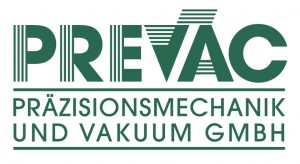RöMa
X-ray grid spectrometer with mandrel optics for very high detection sensitivity
of light elements
Project funding
Co-financing


Project partners
NOB Nano Optics Berlin GmbH

PREVAC
Präzisionsmechanik
und Vakuum GmbH

Institut
für angewandte Photonik e.V.

Duration
Start : 01.08.2023
End: 31.07.2026
Project goal
The overall goal is to research, build and prove in proof of principle a novel X-ray grating spectrometer for the extreme ultraviolet (XUV) and soft X-ray range with a very high detection sensitivity for light elements such as lithium (Li) and boron (B). to test experiments. Initial preliminary considerations point to very promising possibilities for increasing the number of detected photons by one to two orders of magnitude by increasing the detected solid angle compared to the devices currently available. At the same time, the intensity of the disturbing higher orders, e.g. B. of oxygen, can be reduced by several orders of magnitude by increasing the reflection angle. To increase the solid angle, the project is researching a “mandre optics” (MO) as a condenser. This is the part of an internally mirrored ellipsoid that is formed by a mandrel, i.e. a replica.
Features
- E = (35 – 200) eV, with separate RZPs up to approx. 1000 eV
- Energy resolution power (E/ΔE) ≈ 240 at 72 eV
- Diffraction efficiency of the RZP > 15 %
- Sensitivity < 1 % for Li in compounds
- Solid angle that the optics capture: 0,2 sr for Li
- Compact instrument with a total length of (0,3 -1) m
Application
- Use of the new spectrometers on scanning electron microscopes (SEM) and
Electron beam microanalyzers (ESMA) - Spatially resolved representation of the element distribution on surfaces (cathodes/anodes). From Li-ion batteries
- Determination of the boron content in doped semiconductors is an important area of application
Spectrometers in microelectronics and chip manufacturing.
Description
Within the ProFIT joint project, an X-ray grating spectrometer is being developed whose energy resolution capacity should be so high that chemical shifts resulting from the molecular formation of the Li and B elements can be measured. The optical element is custom designed so that the device is either designed for single-element detection or can cover a larger energy range. There are currently no suitable devices with the required detection sensitivity and energy resolution capacity for determining the proportions of these light elements in a mixture and the chemical compounds in which they are present. If successful, this will open up a large market through the use of the new spectrometers on scanning electron microscopes (SEM) and electron beam microanalyzers (ESMA). Because of their high spatial resolution and the possible representation of the element distribution on surfaces (cathodes/anodes), these are of particular importance for current research into modern energy storage devices, such as: B. Li-ion batteries. This means that, on the one hand, spatially resolved measurements are possible with the new spectrometer and, on the other hand, it opens up further areas of application in the field of battery recycling. Determining the boron content in doped semiconductors is an important area of application for spectrometers in microelectronics and chip manufacturing. One of the central project goals is the local availability of mandrel optics, the complex production of which is being researched and which are being built as demonstrators. If the project is successfully completed, this technology will be available in Germany for the first time. To date, mandrel optics have only been manufactured at NASA and in a few companies worldwide. In order to fully exploit their potential for the planned spectrometers, they must be adapted to their respective energy ranges and optical path lengths, which means that application-specific devices can only be offered. With the in-house production of mandrel optics, NOB’s technological basis and vertical integration are expanded while at the same time avoiding possible supply chain problems. A new generation of reflection zone plates (RZPs) will reflect and disperse the beam emitted from the mandrel optics on an annular area. The beam is focused on the detector. On the one hand, new calculation methods are required for the structure of the 8 RZP, since so far only divergent beams have been used. On the other hand, new types of adjustment procedures must be researched that ensure the high-precision alignment of the mandrel optics, RZP and camera to each other and to the X-ray source.
In this context, it should be emphasized that the energy range of X-rays used here makes a spectrometer concept in a vacuum (HV/UHV) necessary. This places increased demands on sample handling, adjustment and the entire instrumentation. In summary, the project simulates the spectrometer, researches the production of the mandrel optics and produces them as demonstrators. The new spectrometer is being designed as part of industrial research and is being built as a sample with the mandrel optics, a specially developed RZP and the new detection system. This concept therefore has a number of unique selling points with the clear advantage that the technologies and critical assemblies required for subsequent device production are available in the Berlin/Brandenburg region and thus new jobs can be created and sustainably secured.
